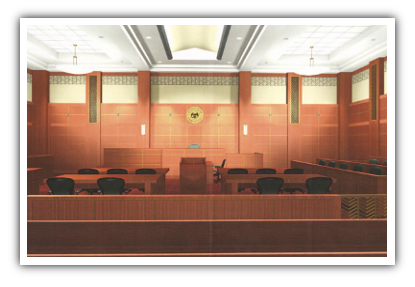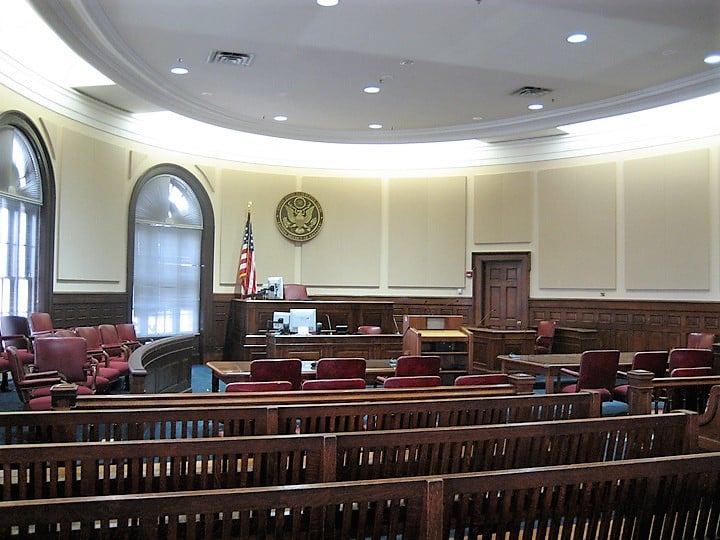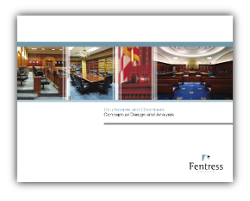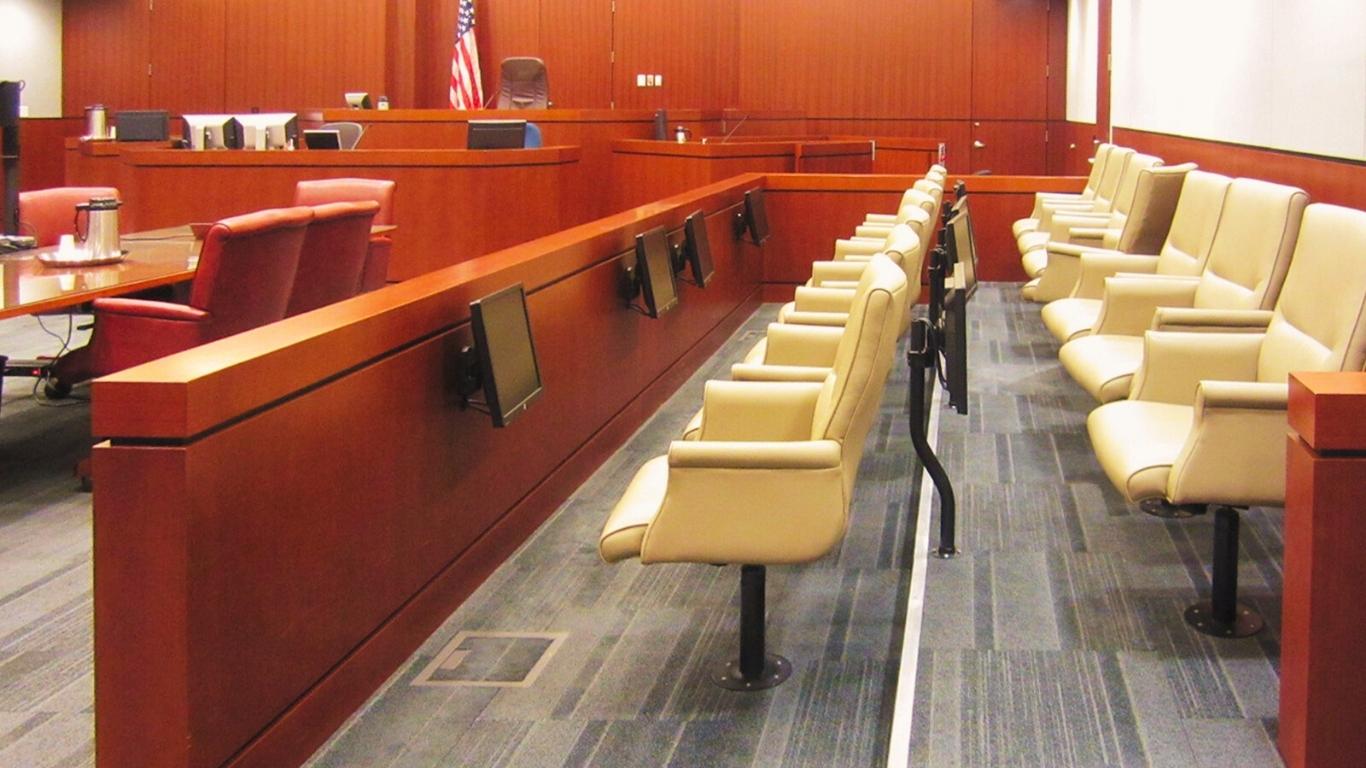In a previous blog on courtroom sightlines, we discussed the issue of good visibility in the courtroom. In this post, we focus on another of our five senses – the ability to hear in the courtroom. The ability of all participants in a trial to listen to the proceedings is a necessity.
Can You Hear Over the Courtroom Noise?
Any time participants and spectators come together, there will be courtroom noise. The key is to design a courtroom so that noises do not distract from the proceedings. To achieve this goal, it is important to consider materials and other factors that impact courtroom acoustics.
I have been in many courtrooms with bad acoustics. In one Maryland courtroom, the shuffling of papers at the counsel table could be heard in every corner of the room. This was also true for whispers at the judge’s bench. In this case, the judge had a white noise generator on the court, switched on whenever he asked counsel to approach. Another memorable courtroom had a dome-shaped ceiling above the lectern in the well area. As lawyers spoke from the pulpit, their voices grew louder and were projected downward on the participants. (The judge joked that since all lawyers think they are God, at least now they can sound like Him.)
The acoustics in a courtroom can be affected by (1) reverberation of sound within the courtroom and (2) unwanted sound transmission from outside the courtroom. We will begin with a discussion of internal noise sources and sample solutions.
Sources of Courtroom Noise
Internal sources of distracting noise in a courtroom that should be remedied include noise resulting from:
- Hard, highly reflective wall and ceiling surfaces
- Irregular ceiling or wall shapes
- Disproportionate relationship between ceiling height and horizontal room dimensions
- Disproportionate relationship between a courtroom’s length and width
- Florescent lighting fixtures
- Courtroom participants walking on hard surface floors
Although installing a courtroom audio system can improve upon some of these deficiencies, it will only partially eliminate the distractions. Additionally, the inability to remove highly reflective materials from an existing historic wall or ceiling surface or add sound-absorbing materials to the ceiling or fences due to preservation requirements may present a significant challenge to the design team.
Courtroom Noise Solutions
Existing courtrooms often encounter poor acoustics due to an excessive presence of very low Noise Reduction Coefficient (NRC) rated surface materials. (An NRC rating of one is absorptive, and an NRC rating of zero is reflective.) The addition of highly NRC-rated sound-absorbing materials may be required to modify and control the sound wave patterns in the room and improve reverberation time performance.
Acoustic wall treatments for controlling courtroom noise might consist of a highly NRC-rated one-inch or two-inch thick fibrous core, such as five-pound density fiberglass, covered with a fabric facing. Any fabric air that can pass through may be used as a finish over the fibrous core. The fabric choice can be principally based on compatibility with the architectural design and finish of the wall on which it is placed.
Wood grilles may also be placed over the fabric panels to better blend the acoustic treatment with wood-paneled walls. Prefabricated wood panels with narrow, sound-absorbing slots are commercially available for this purpose and may better accommodate historic preservation requirements. These acoustic wall treatments are most effective when installed above the wainscot or chair rail. Most average-size courtrooms will typically require the addition of sound absorptive treatment solely on the rear public entry wall to meet acoustic requirements. However, larger courtrooms may need further sidewall acoustic treatment.
The accompanying photo of a courtroom in the Midwest shows a particularly well-designed and acoustically effective use of wood panels backed with acoustic materials.
While adding carpet and padding may eliminate courtroom noise produced by users walking on hard surface floors, this improvement will not normally provide sufficient sound absorption to serve as the sole NRC-rated solution for overall acoustic control in a courtroom.
Our next post will continue this discussion, focusing on external noise sources.
_________________________________________________________
Click the image to download our Courtrooms and Chambers: Conceptual Design and Analysis eBook.






















